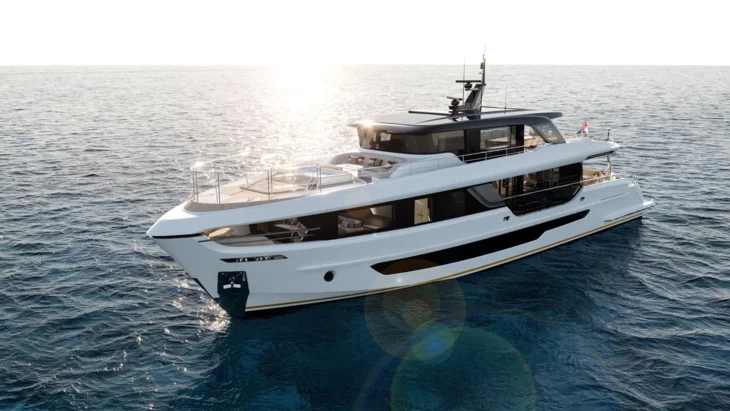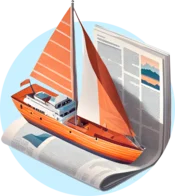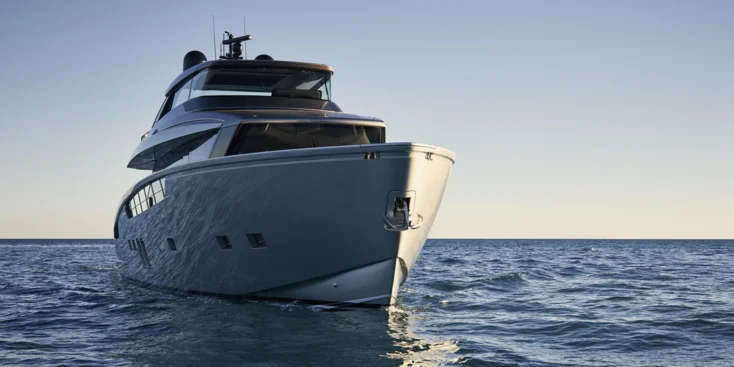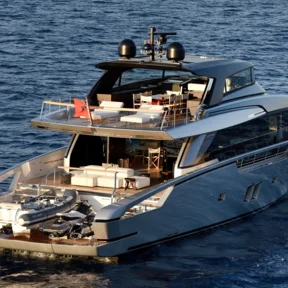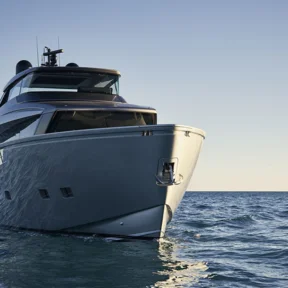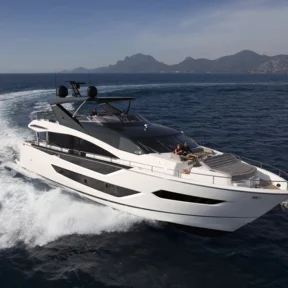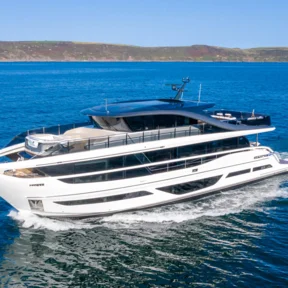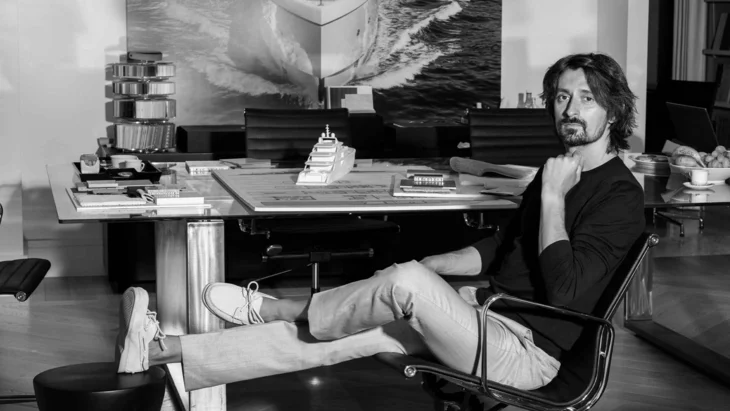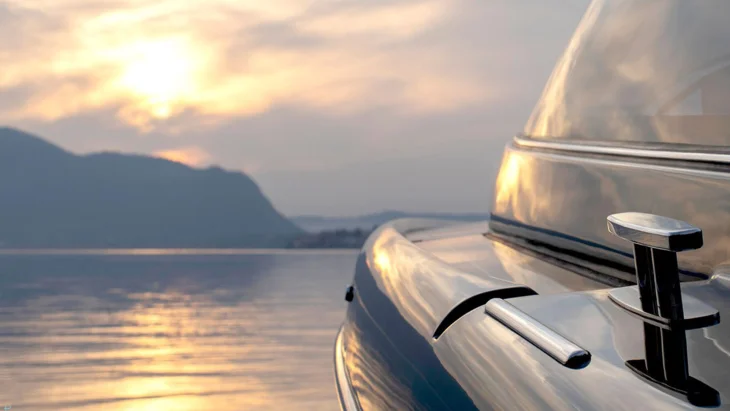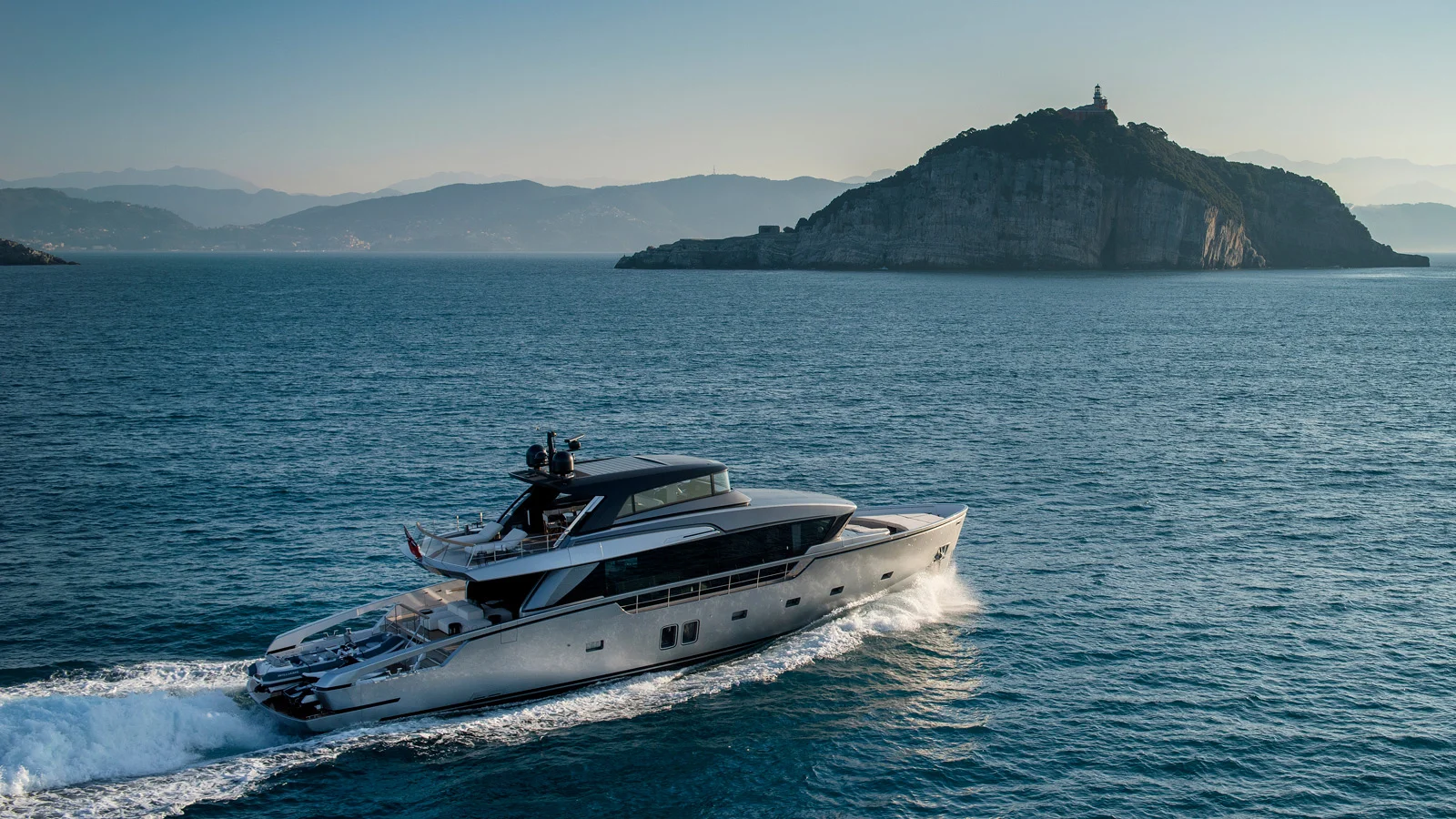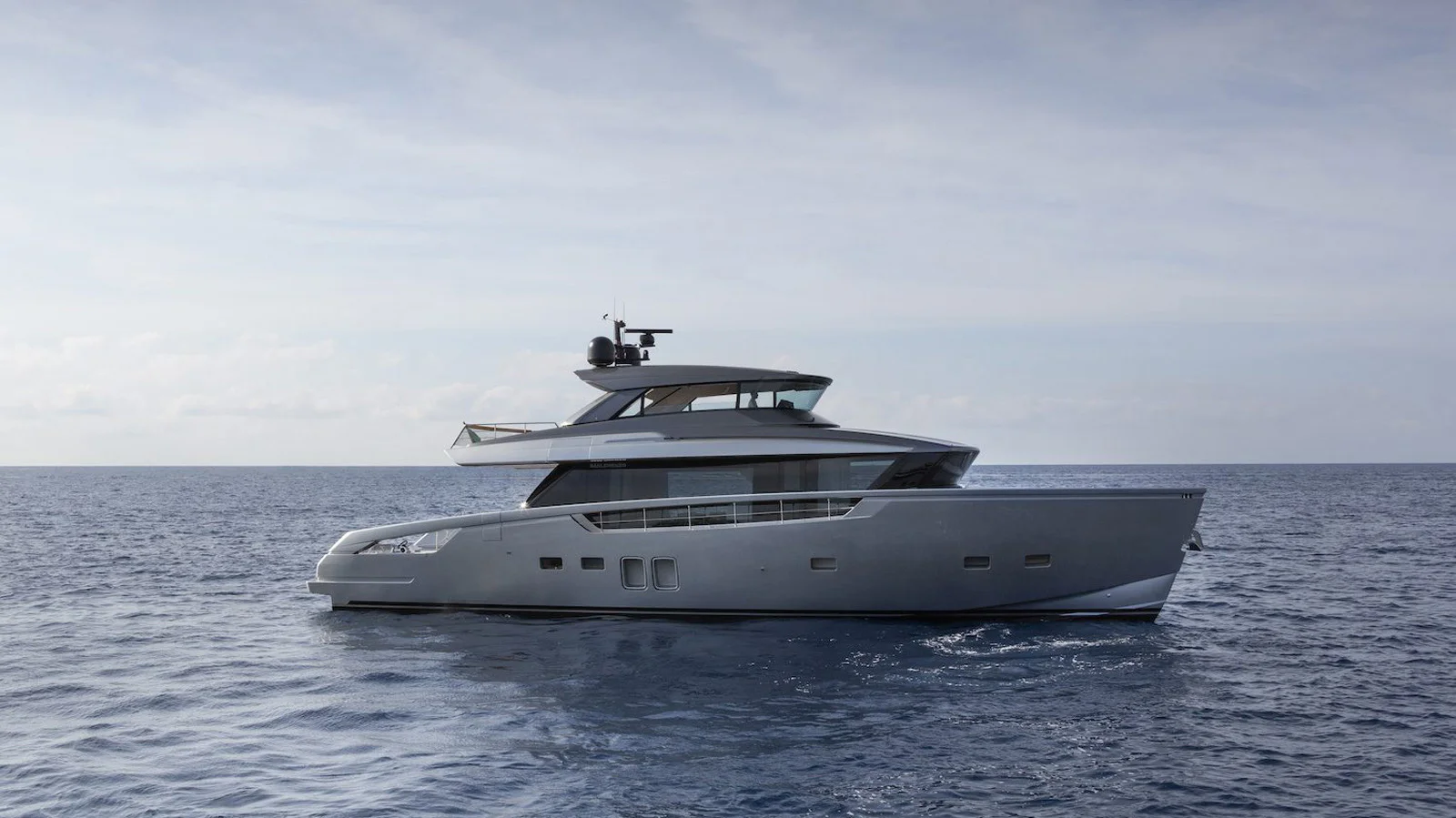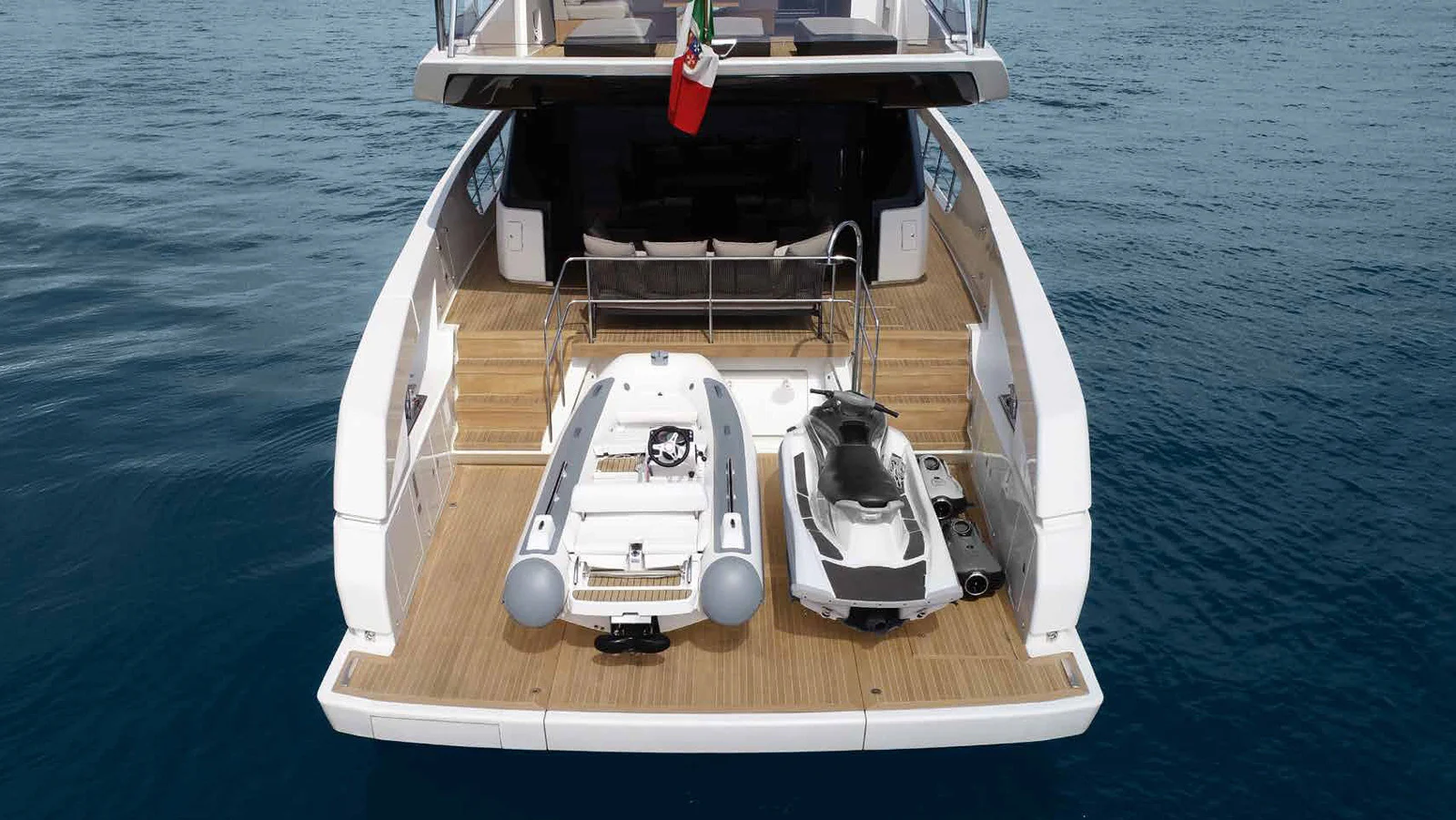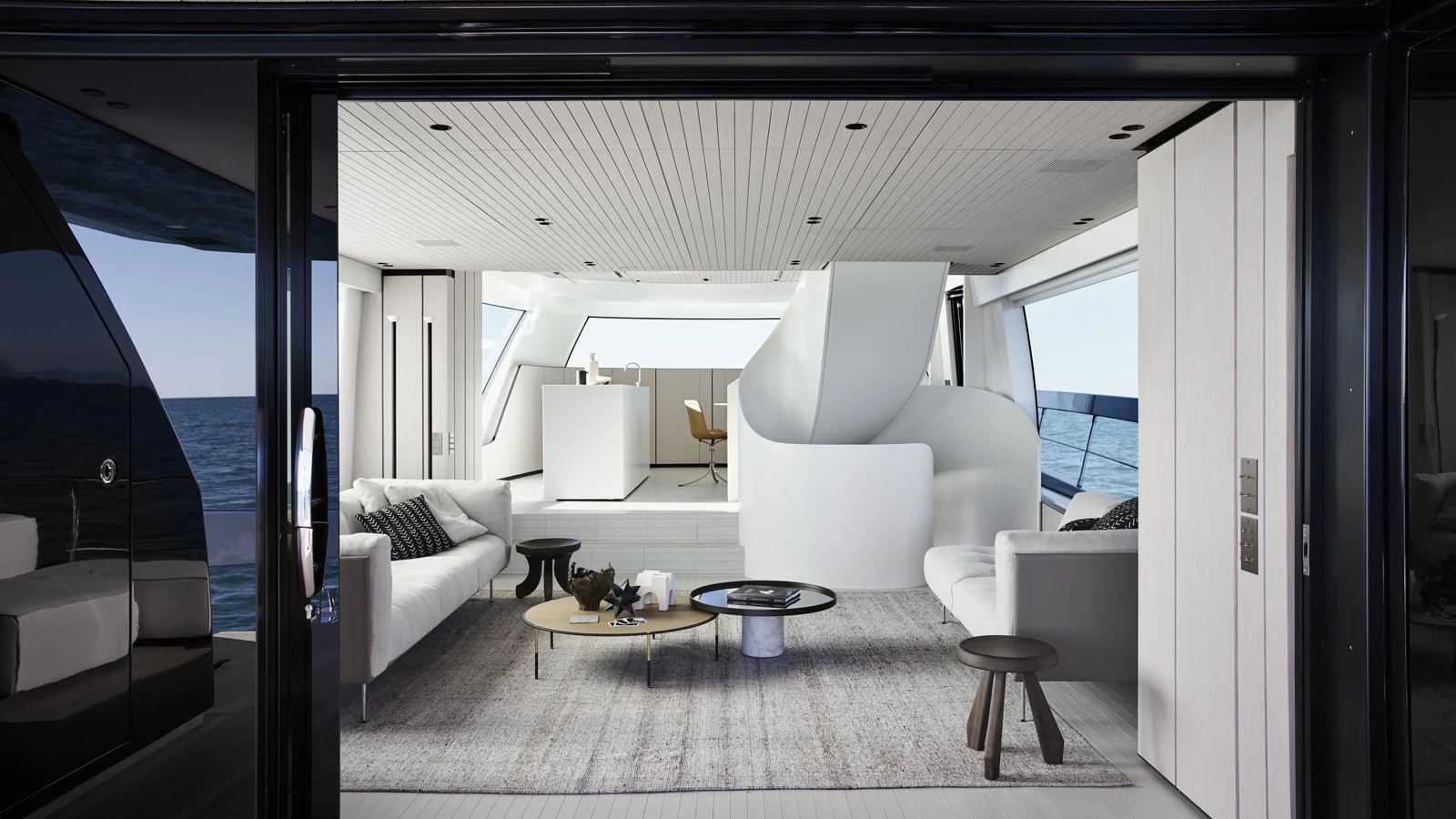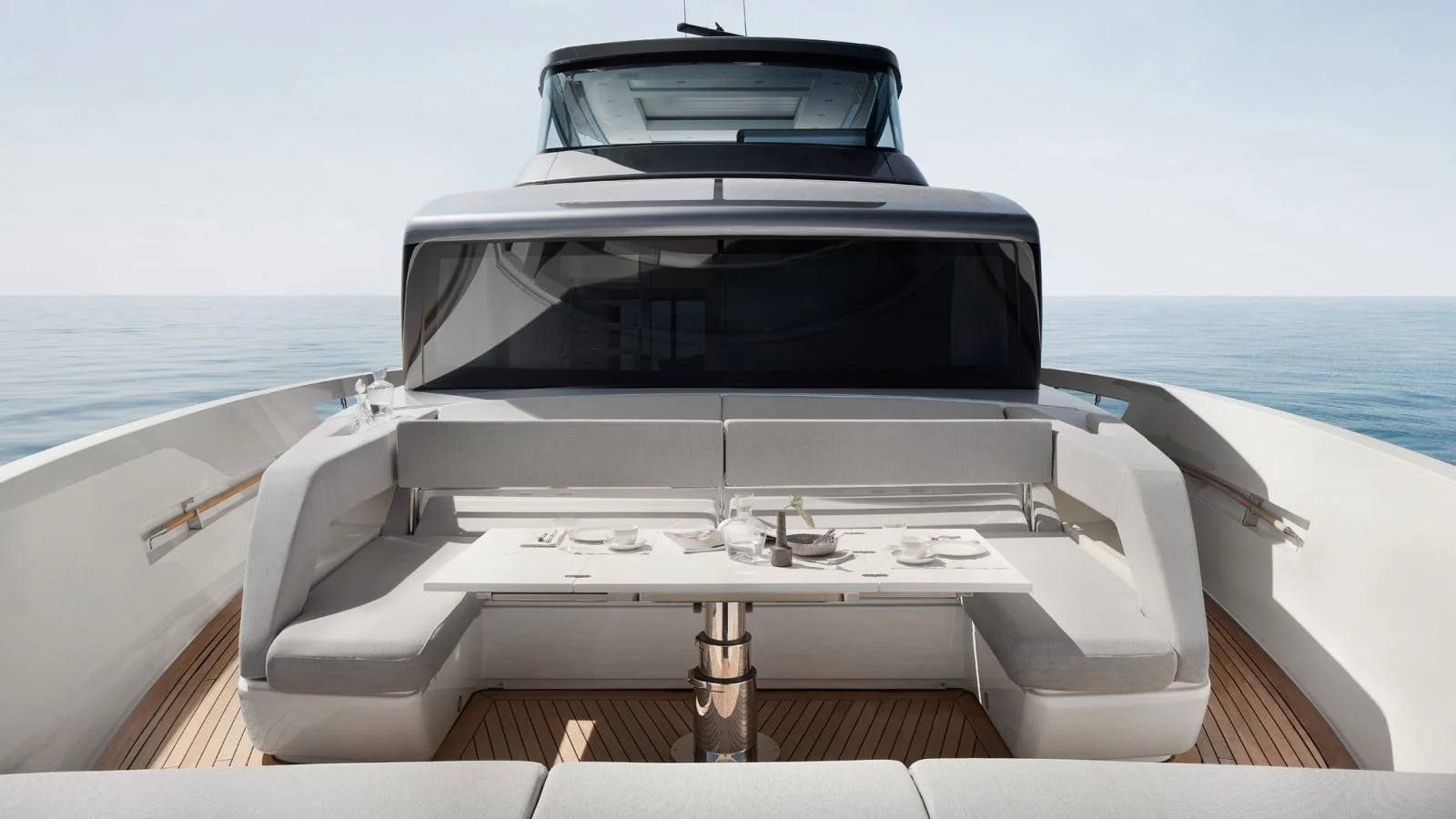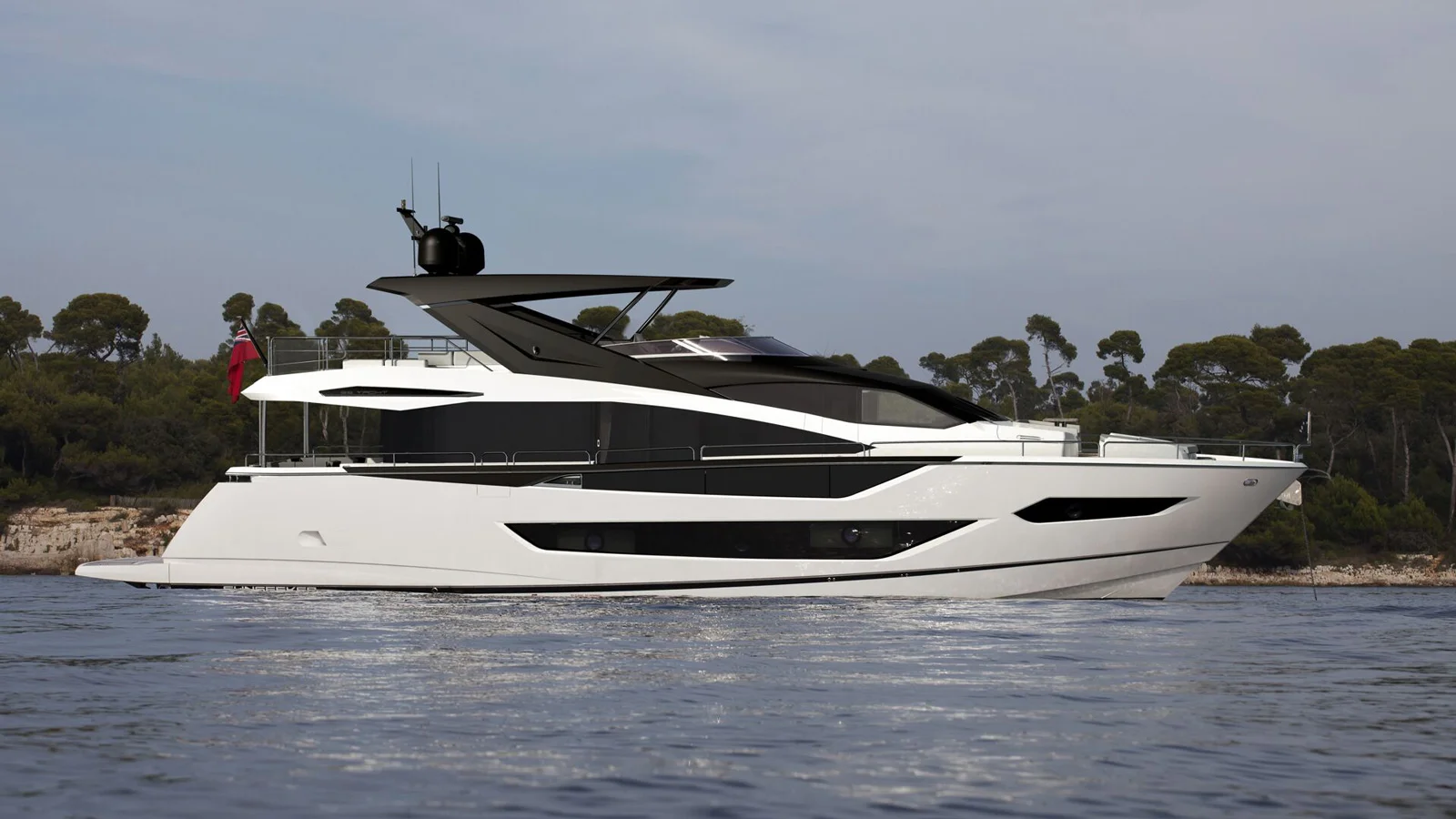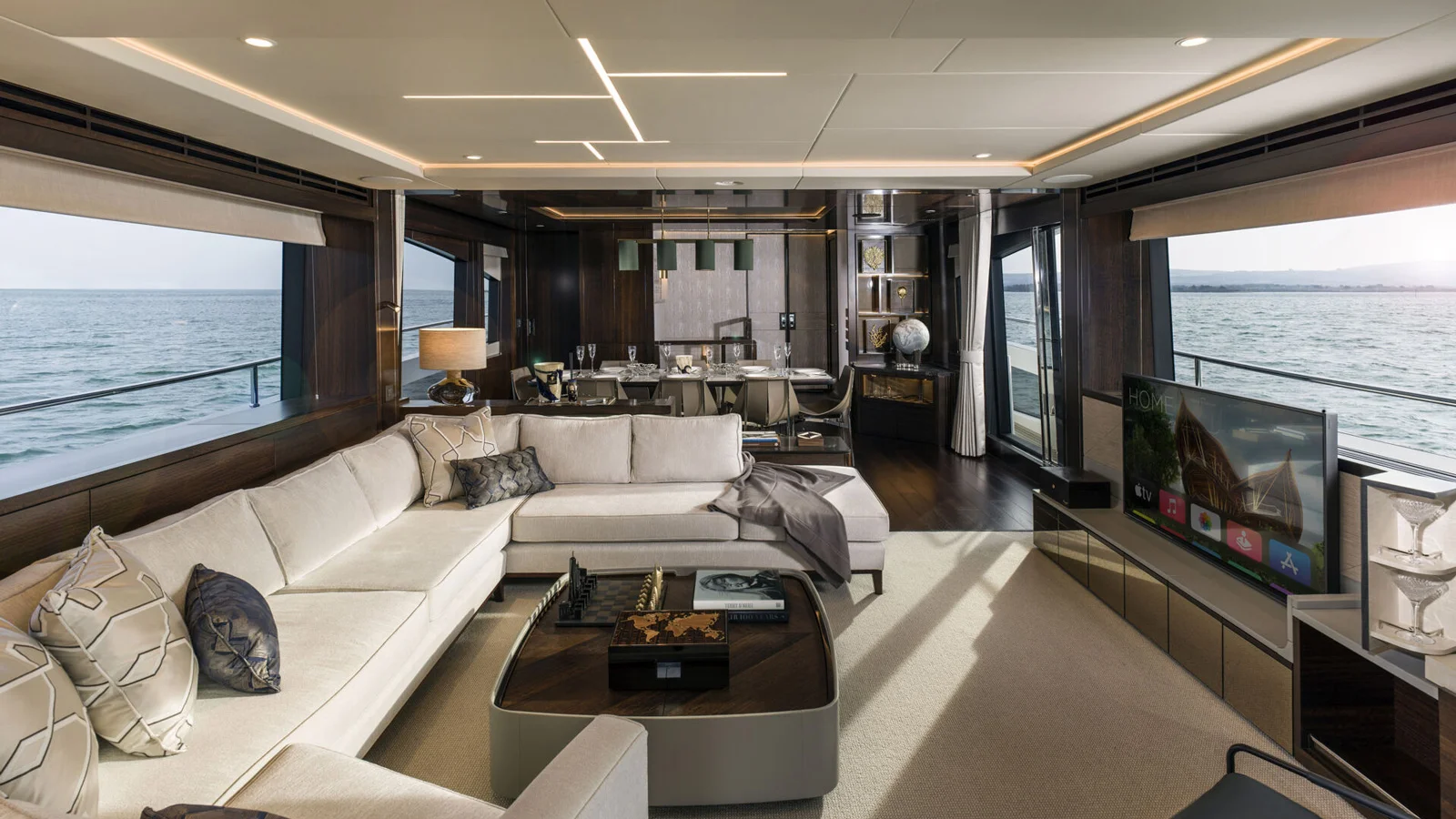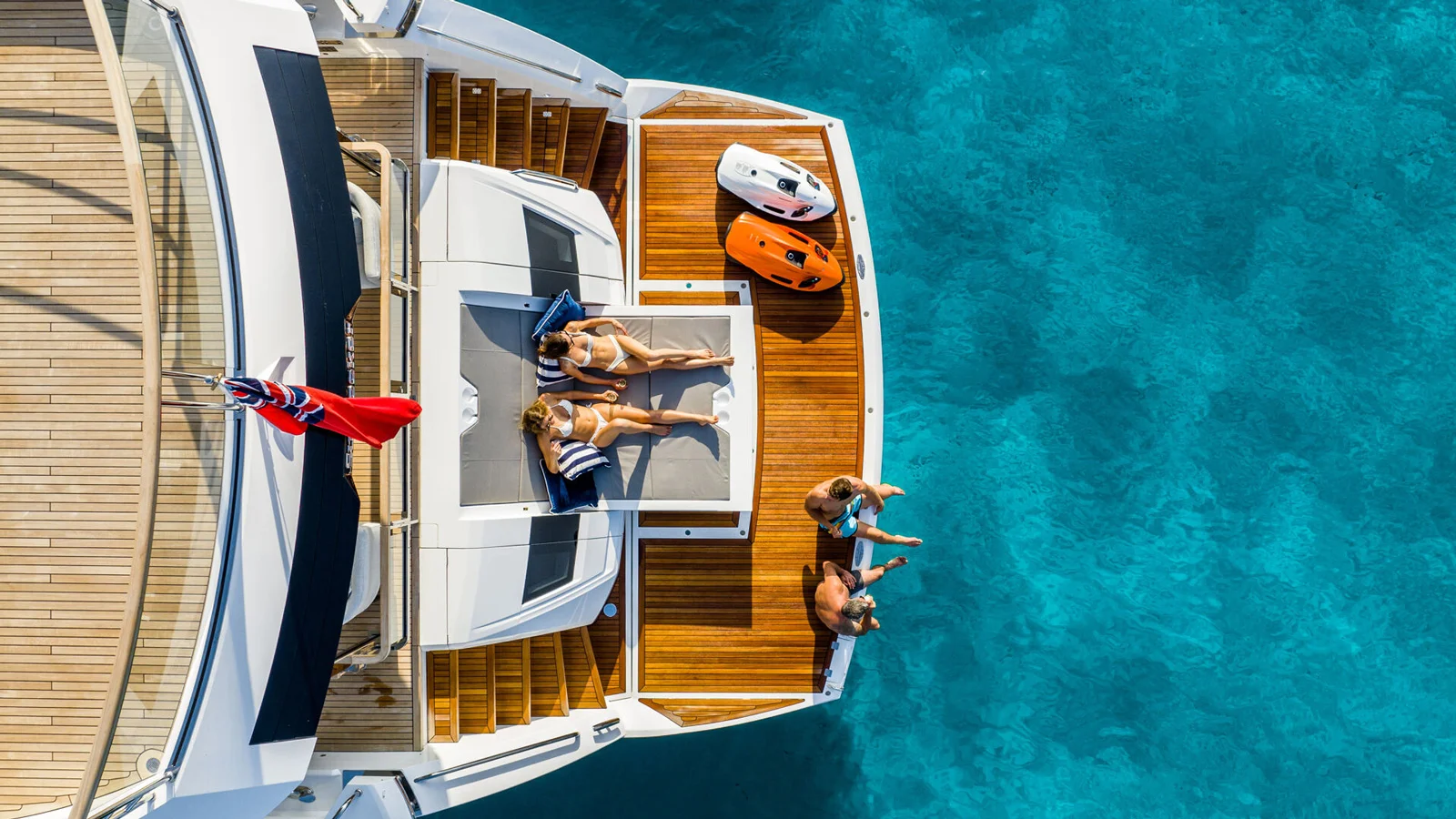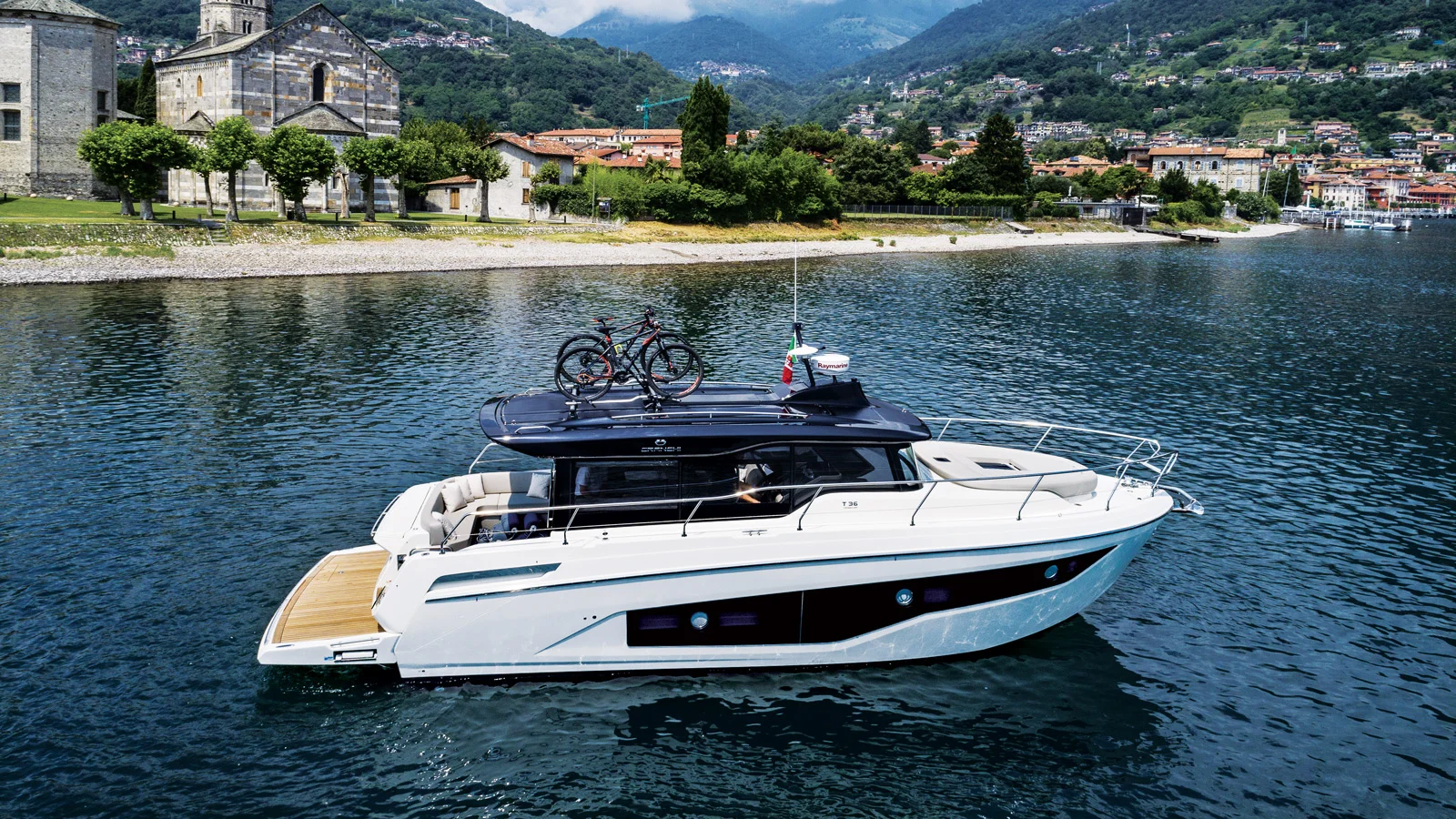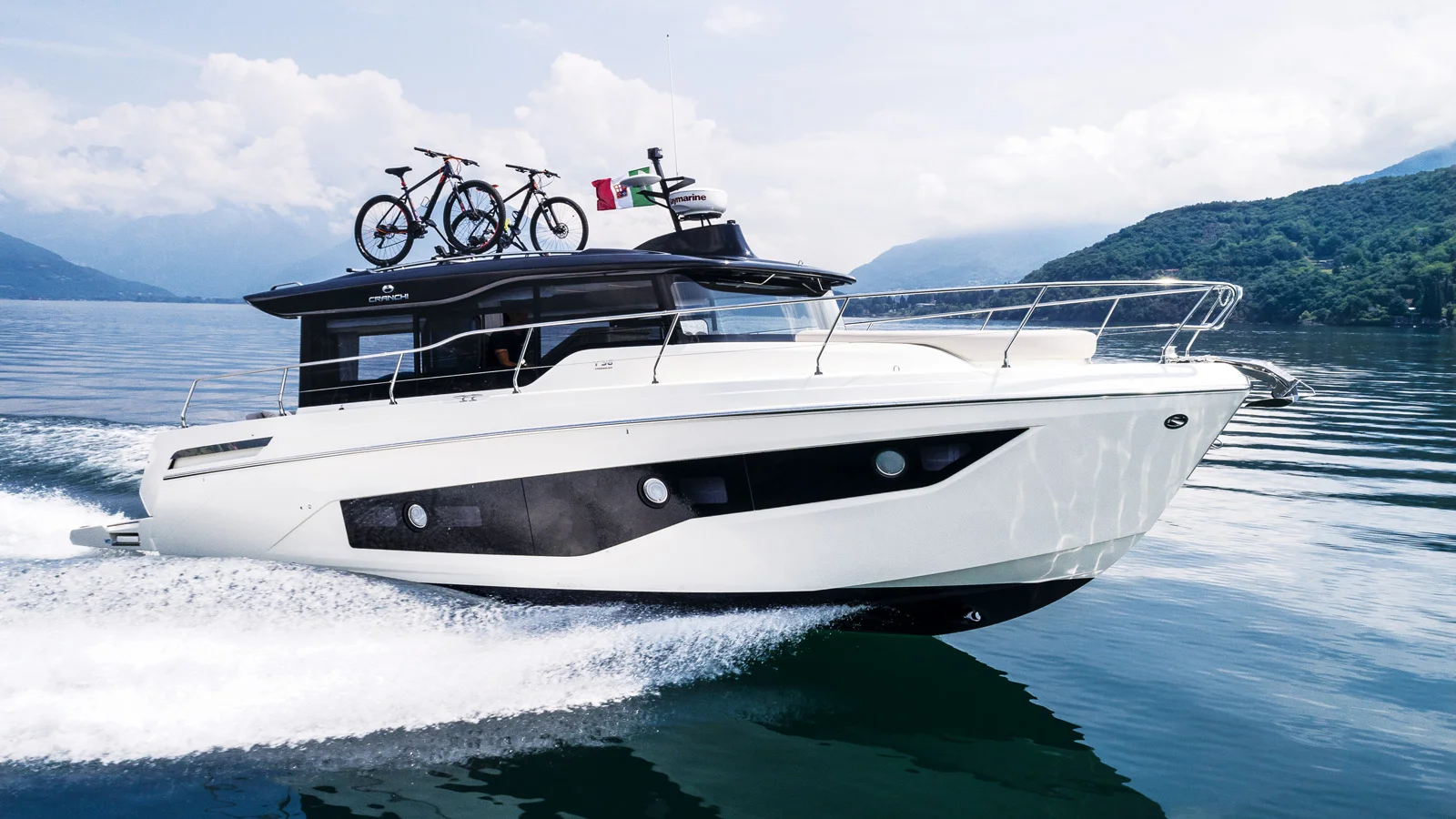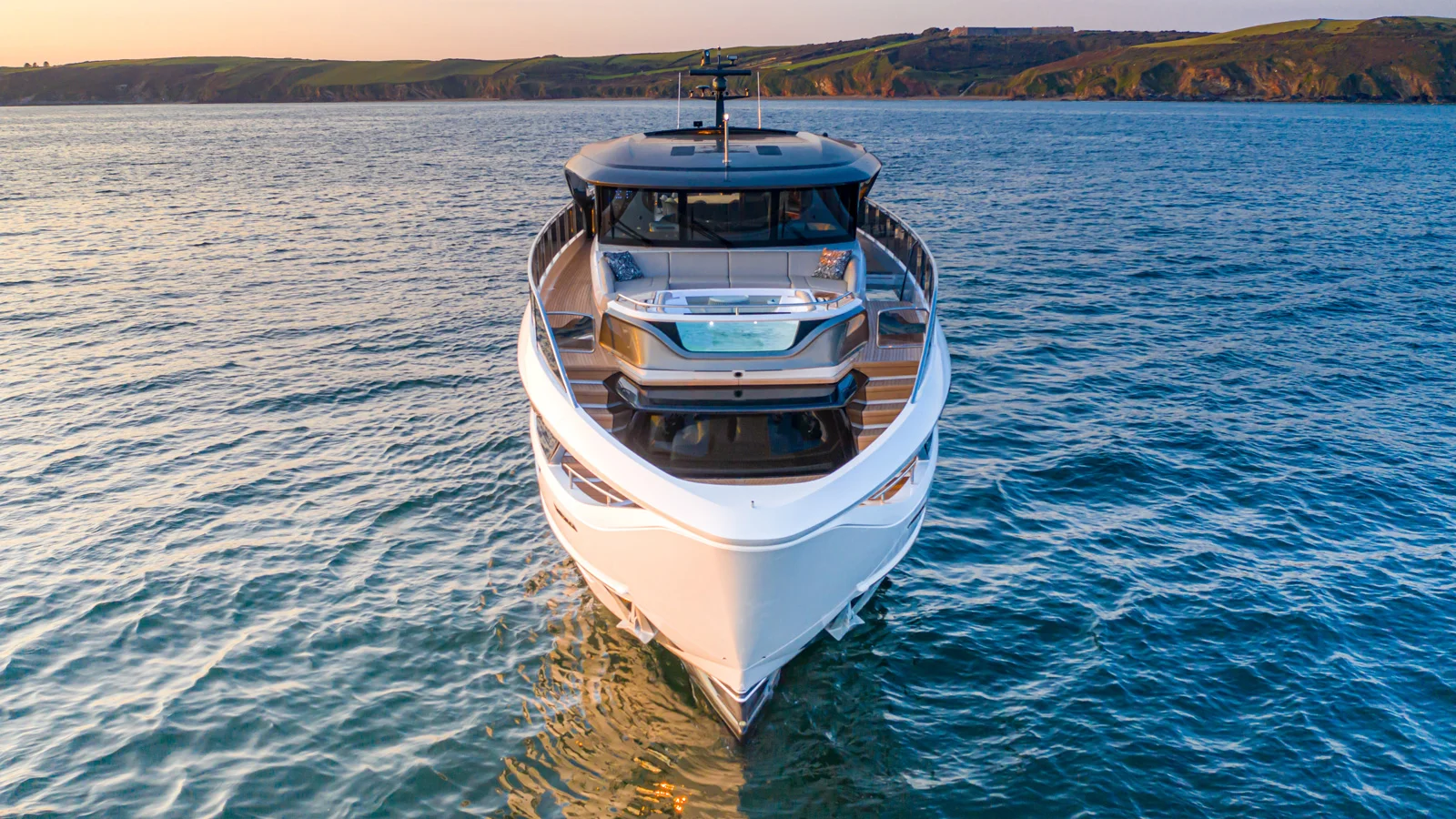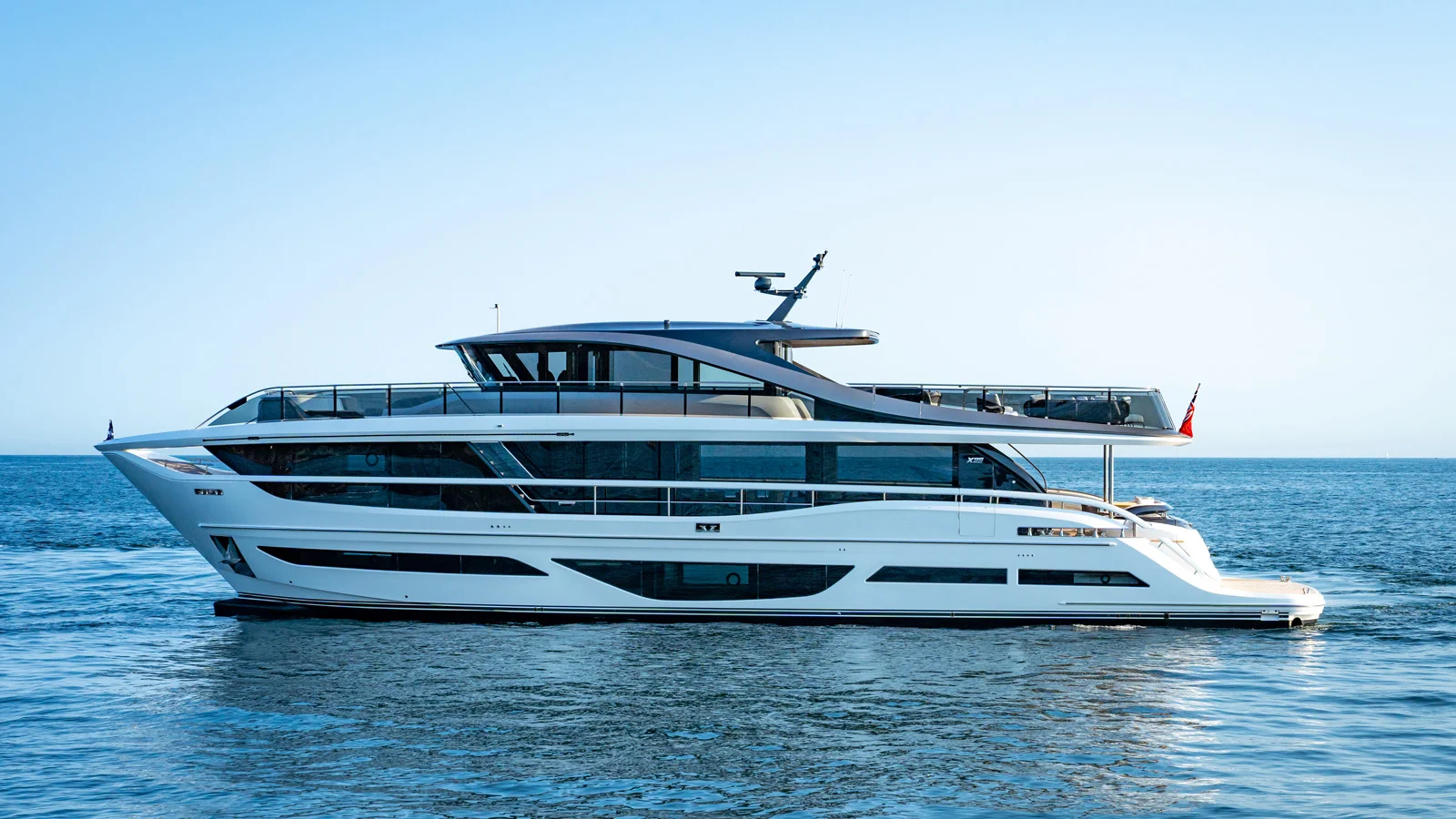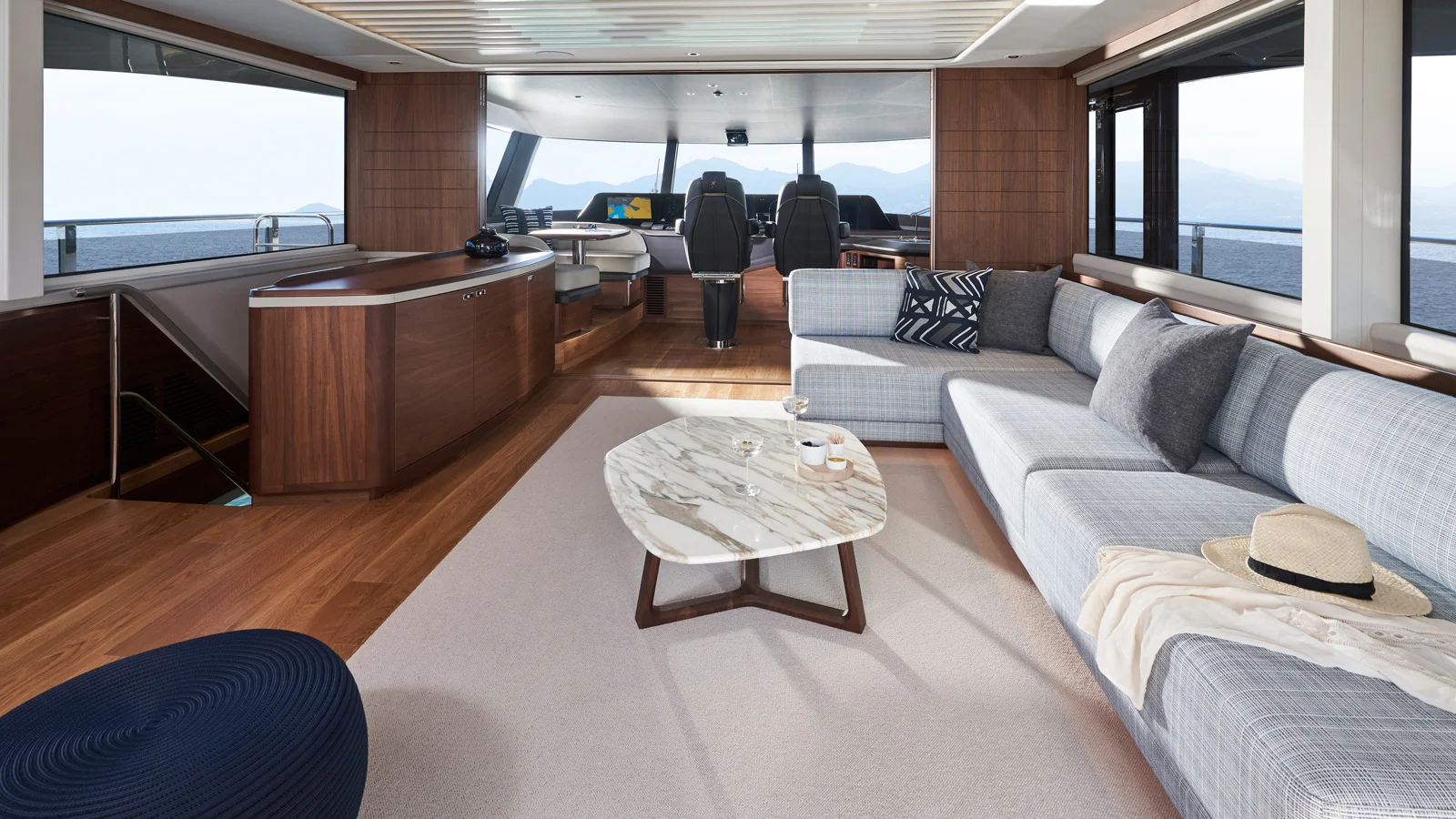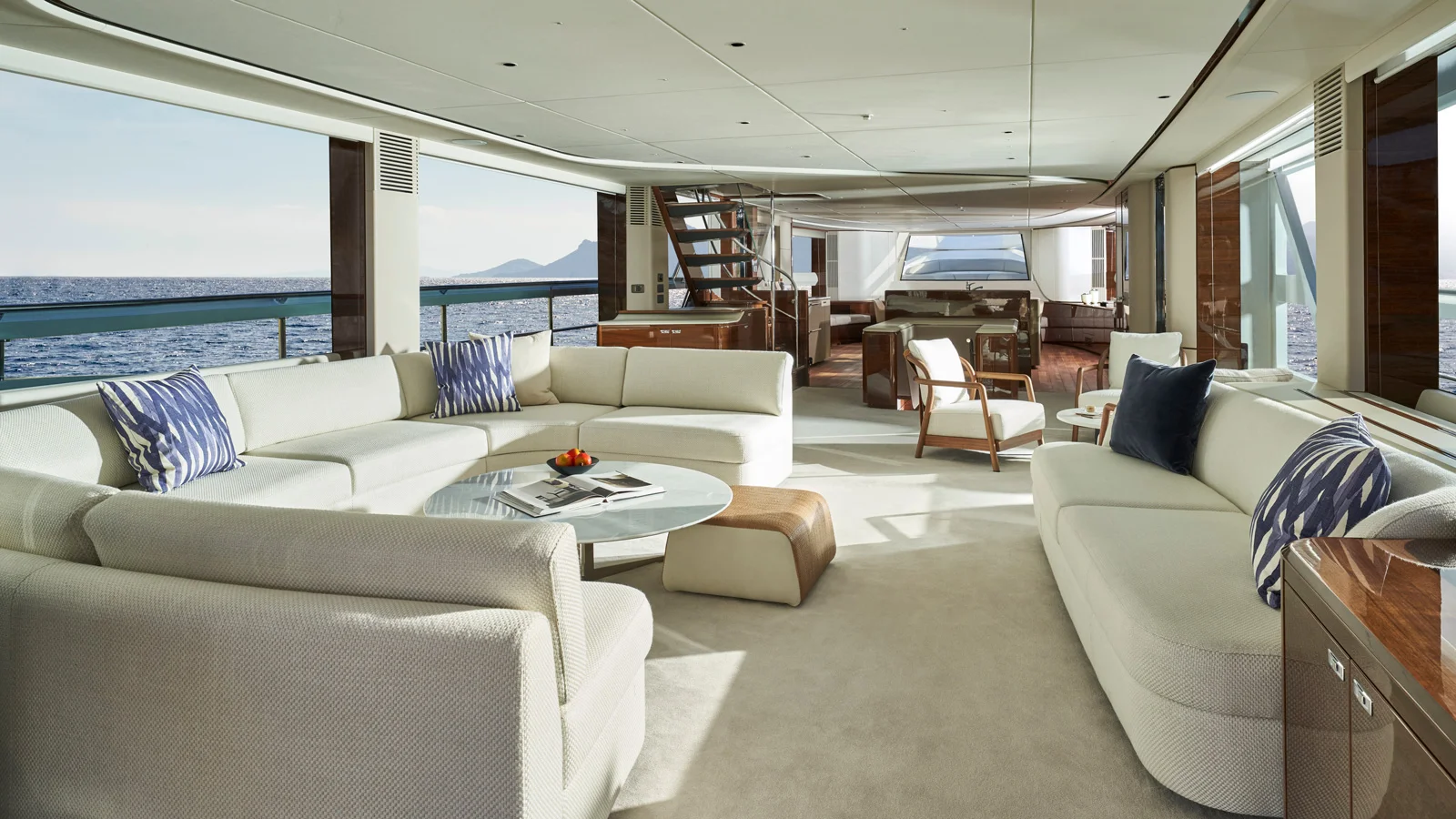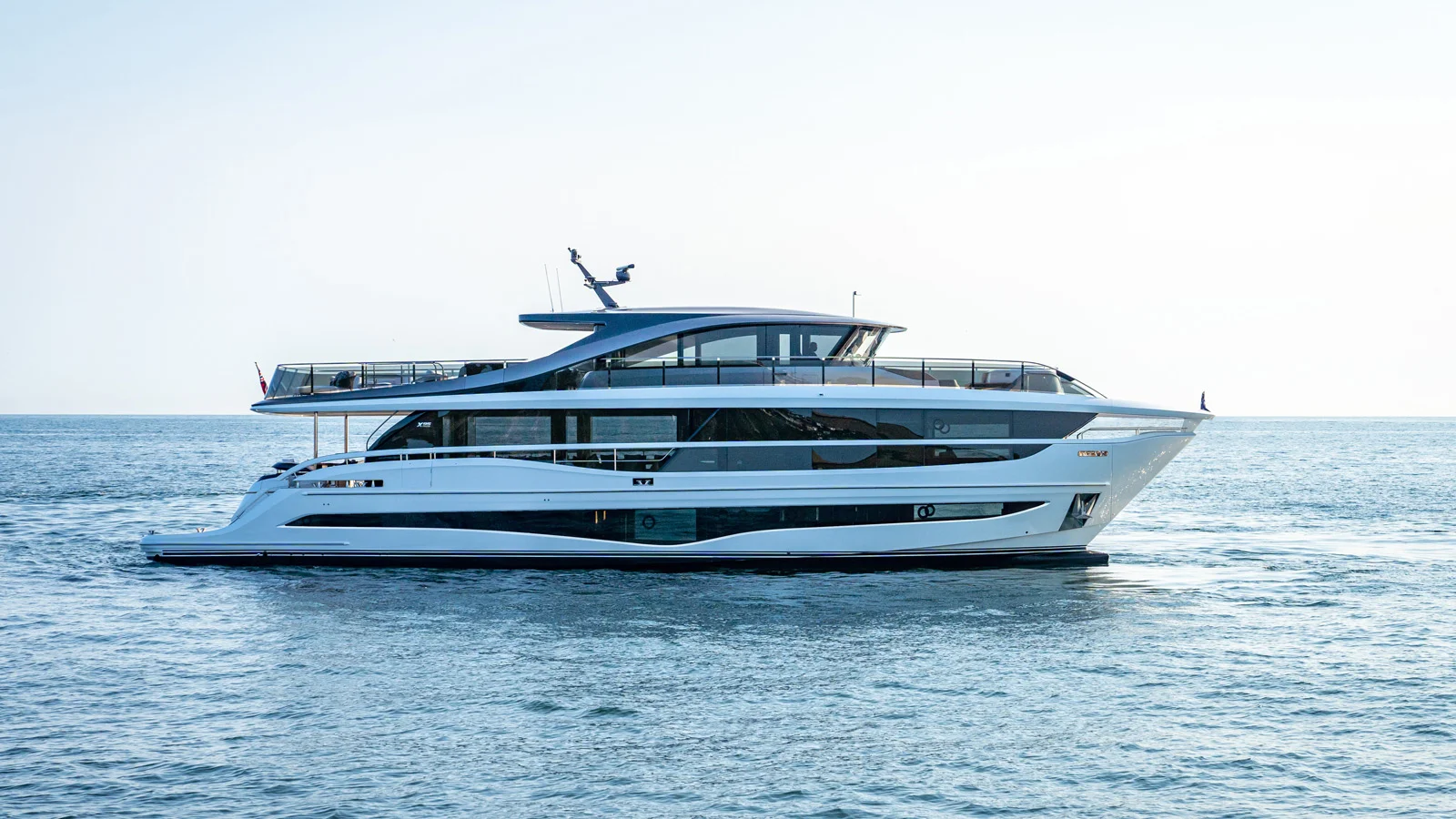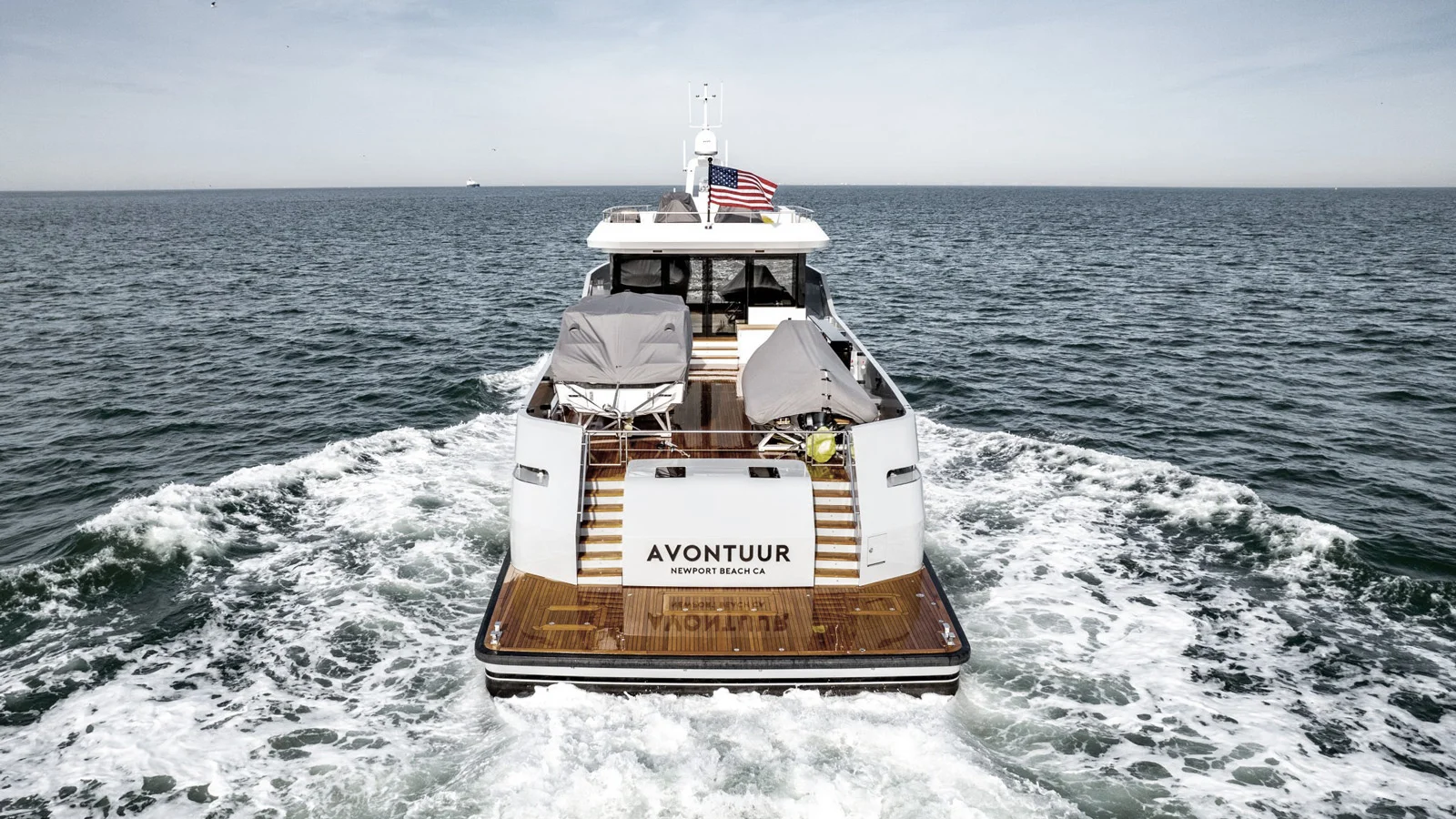X-Boats or what is a crossover yacht?

Strictly speaking, today almost any boat can be dubbed a crossover. This term is so general and collective that the manufacturers’ desires to make their yachts “stand out”, “be one of a kind”, “set new standards” and “go the extra mile” can easily fit the definition
Of course, the capacious term “crossover” itself is to blame, as it implies some kind of intersection, a transitional phenomenon, which is visually reflected even in its English abbreviation: x-over. So, in fact be it a yacht with a good range or some extraordinarily expansive glazing, or even stowage space for three Seabobs instead of one – all of these may be referred to as attributes of a crossover.
Why did the shipyards all of a sudden start manufacturing crossover yachts? Is it just another marketing whim? Not exactly, because as applied to yachts, a “crossover” stands for a “transitional phenomenon” that has already managed to establish itself and gain popularity in the automotive industry that the yachting industry has been following on the heels. What we mean here is a synthesis of a passenger car and an off-roader, sometimes dubbed a “soft-roader”. The idea seemed quite plain: just like there are serious jeeps on land, there are brutal explorers at sea for those who want to explore the remote corners of the globe. There are also stylish “passenger” yachts created for relaxation and comfortable cruises. So why not combine the two the way they managed to do it in the car industry a long time ago?

And so they did: the first “official” crossover, the SX88 from Italian Sanlorenzo, was unveiled at the Cannes Yachting Festival 2017. “A shipyard must have courage to make a product like this. We wanted to invent a product for people who love boating, who love to be close to the sea – it is a little revolution," said Massimo Perotti, CEO of Sanlorenzo. The name of the model is an acronym, which stands for Sanlorenzo + X-over (crossover) + the length of the yacht in feet.
Sanlorenzo does not conсeal its “borrowings” from the car industry. When creating the SX, the Italian shipyard drew inspiration from successful BMW crossovers, presented in their X series. They are beautiful, stylish and comfortable cars that have enjoyed popularity with customers for years. And the idea of transferring this experience to the yachting sphere seemed quite interesting to Sanlorenzo.
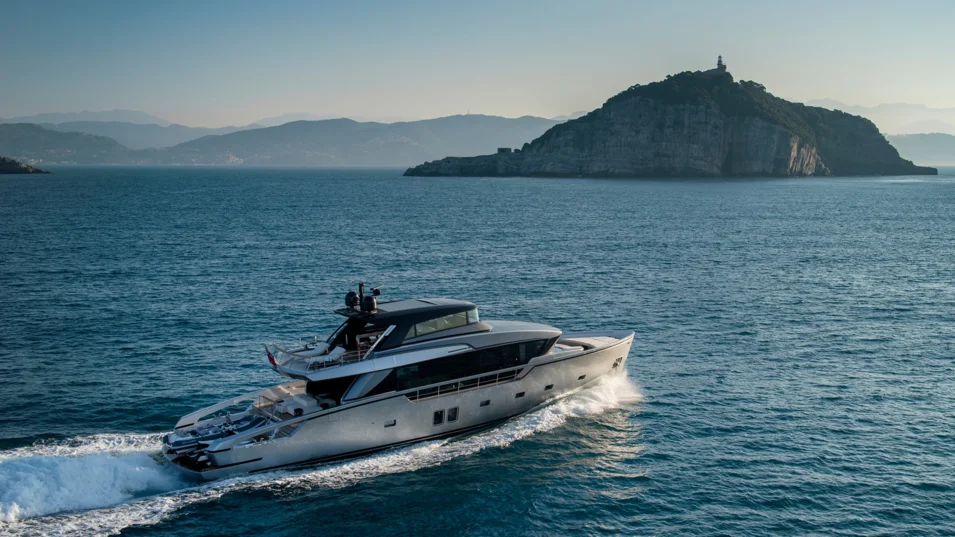
Now we can say that their boldness and its implementation were appreciated: the orders for Sanlorenzo crossovers are scheduled for years ahead, and other shipyards started making crossovers, too. So, what kind of “soft-roader” did the Italians create and what makes crossover yachts so appealing? Let us look at Sanlorenzo SX76 as an example and see some crossovers from other shipyards, too.
A floating villa or the first crossover
A “social boat”, a “synthesis of a flybridge yacht and an explorer model with an open transom”, “a comfortable loft on the water” – these are just a few names given to the SX line representatives. An obvious compliment to the SX76, which we have chosen as an example of Sanlorenzo’s implementation of the idea of crossovers, was that it didn’t reveal any striking differences from the SX88.
Why is it a compliment? Because the older model enjoyed extraordinary popularity. She proved the viability of the idea of crossover yachts and the original approach to space arrangement. The SX76 managed to keep all of it, but “packaged” in a smaller size, which is always a challenge for the builders.
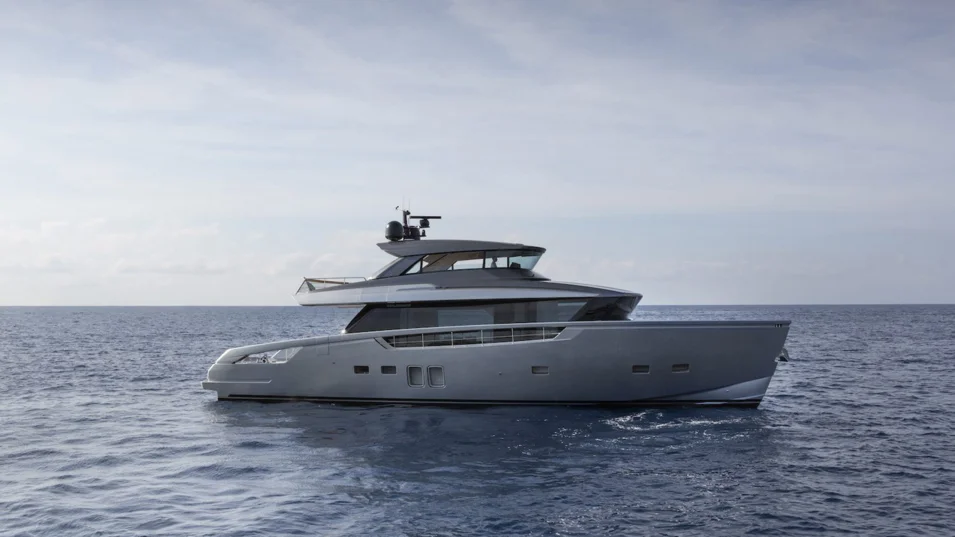
Why did the shipyard want a “smaller copy” of the SX88? One of the key reasons for launching explorer yachts was the desire to attract the young audience. The word “young” here does not only stand for age, but for yacht ownership experience. The SX line was meant to offer a new concept of recreation on the water, to make the idea of having a yacht appealing to those who had never thought of it before. These boats were compared to houses on the water that are not attached to one place and capable of moving from one point to another. Although moving is kind of secondary here, as the focus is on calm recreation on the water and communion with nature.
The hull with a high, seaworthy bow is a tribute to expedition vessels. It adds more seriousness to the vessel’s character and makes the profile more dynamic. On the one hand, this solution helps to reduce the weight, on the other, it allows the yacht to look imposing and to demonstrate that she is ready for any challenges. Another feature of hers is an open aft with a huge beach club. When in a “travelling mode” it can accommodate a four-metre tender, a jet ski and water toys with a crane for launching them that is concealed on the port side – a solution which freed up the space from the technical equipment. When the tender is on the water, the extensive platform located about 50 cm above the sea is used as an extraordinarily large beach club of over 18 sq.m, furnished with umbrellas and chaise longues.
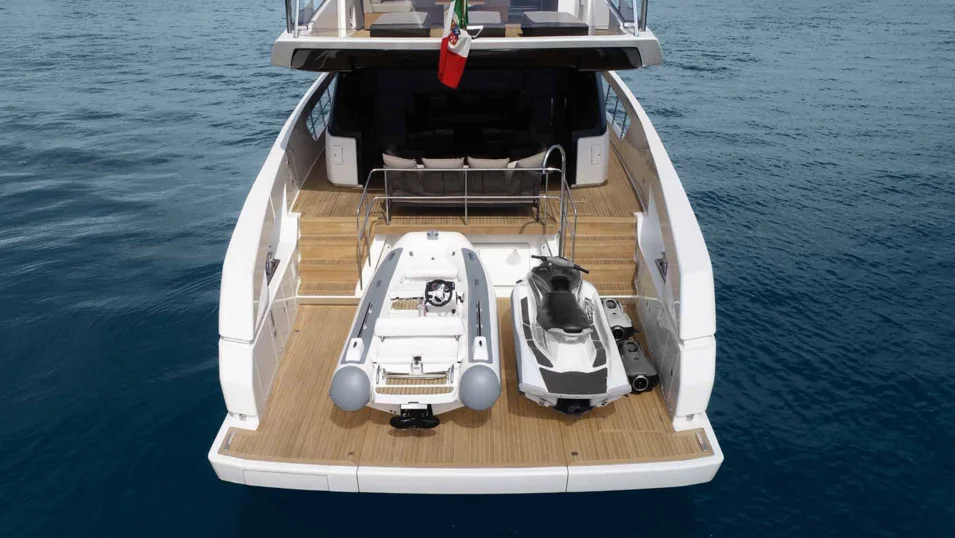
The key feature of the superstructure is expansive glazing and careful concealment of the areas, where the glazing ends and structural elements begin, so it feels like the whole boat is made entirely of glass. The exterior spaces are as open as possible and ample.
The SX76 has only one helm station on the flybridge. It might seem impractical, as in bad weather it will not be pleasant to stay there, but there is no need to worry: the helm station is protected with a front glass, which can be supplemented with side windows if necessary. If desired, the aft part of the deck can be enclosed, too, and the climate control system will allow one to provide comfortable conditions for the captain even on cool and rainy days.
Designer Piero Lissoni offered his vision of the first SX76 unit. His idea was to create an absolutely new approach to the space on board. Locating the helm station on the flybridge made it possible to free a huge area on the main deck forward. Moreover, all of the main deck became one large space with different areas dedicated to a saloon, a dining area and an open galley and creating the atmosphere of a stylish loft.
Another Lissoni’s solution was not to adapt the furnishings to particular areas, but give them more freedom and let the guests act as the creators of their “house on the water” and arrange various areas on their own. The only invariable is a sculptural staircase, designed specifically for the SX76.
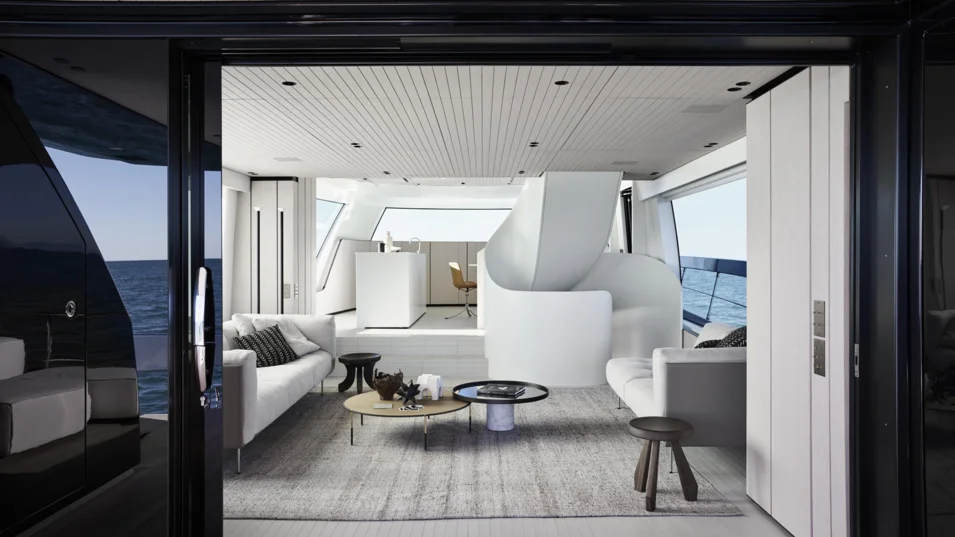
The bow section of the main deck is equipped with everything one needs for a cozy and relaxed atmosphere with a large sunpad. Thanks to a retractable canopy it can easily be converted into an area for al fresco breakfasts, while those keen on sunbathing will be able to enjoy it on a large sunpad opposite.
In the standard version the SX76 lower deck can accommodate up to eight guests in four double cabins. The owner’s suite is located amidships, and there is a VIP cabin forward. There are two more guest cabins on the starboard and port sides between them. However, in Lissoni’s version, he gets rid of the two double guest cabins and arranges a stylish lounge on the lower deck. The number of passengers will have to be decreased down to four or six, but due to the size and the “young” character of the SX76, it is amply justified.
The abundance of mirror-like surfaces in the master cabin extends the space visually. Lissoni suggested placing the queen’s bed facing starboard, and two shower cubicles and a toilet with an open washbasin between them on the port side. There is a dedicated wardrobe hidden behind a mirror-like wall.
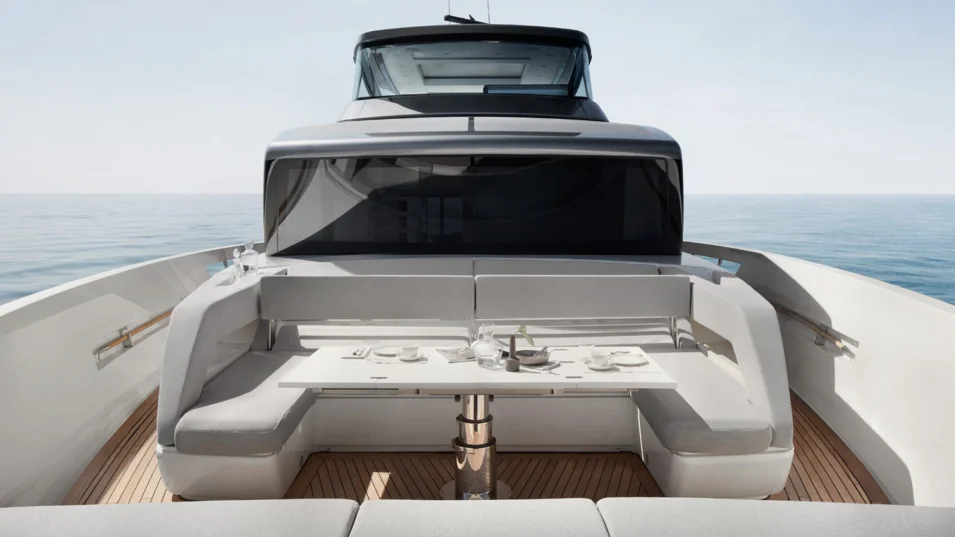
A lounge with a huge L-shaped sofa separates the master suite from the VIP cabin. This space is as original in its volume, style and location as the open area on the main deck. Natural light gets here through the steel retro-style portlights, and when you don’t see the water ripples outside the window, the feeling of being on board a boat disappears completely. The sliding partitions allow one to separate this space and turn it into another guest cabin. The crew cabin for two is arranged between the engine compartment and the master cabin.
The semi-displacement hull passed all the tests in the naval pool of Wageningen (Holland) with distinction and demonstrated great flexibility of use from displacement to fast displacement. A couple of 900 hp Volvo Penta IPS 1200 engines allow the yacht to reach a top speed of 22 knots, to go on long voyages at an economic speed of 12 knots or keep a cruising speed of 20 knots. Autonomy is another SX feature inherited from an “off-roader”. At 12 knots the range is about 1000 nautical miles.
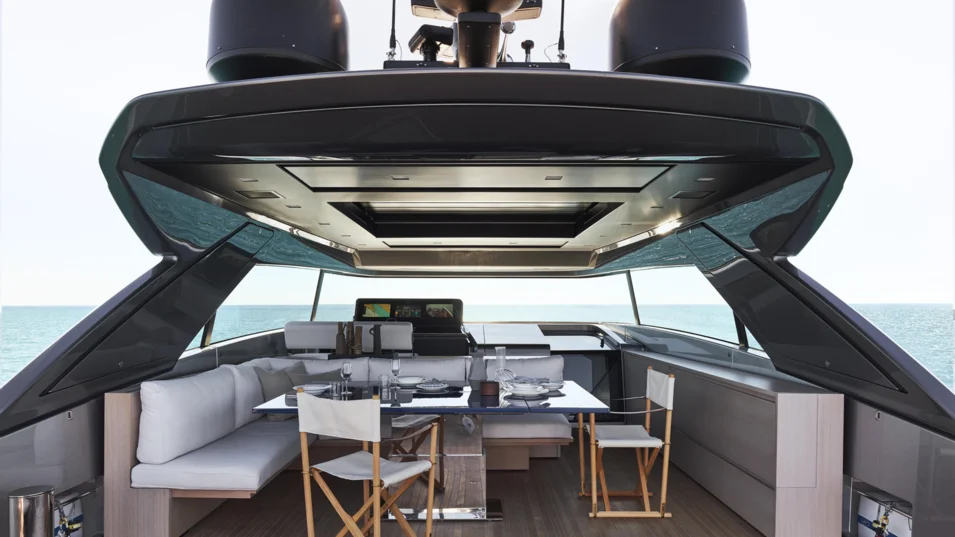
Optimization of the construction process deserves a special mention. A lot of elements are prefabricated and installed on a fiberglass hull or carbon fibre superstructure and put together like a construction toy. Thus, the shipyard manages to handle the flow of orders from all those wishing to own a sea crossover.
“We believe that the SX line will bring Sanlorenzo a new and younger clientele,” said Massimo Perotti back in 2018. “For sure there will be many copies of it by our competitors in the coming years.” And he was darn right. The line was extended to four models (the SX100 and the SX112 joined the SX76 and the SX88), and it is hard to calculate the copies now.
Superyacht approach
In the autumn of 2020 British Sunseeker unveiled a model initially referred to as Project 8X, which later turned into the 88 Yacht. Expressive lines, incredible volume, open plans and a new concept of the famous “Sunseeker Beach Club” – all of these features contributed to the creation of “a feel of a true superyacht” on board a 26.38-metre British crossover.
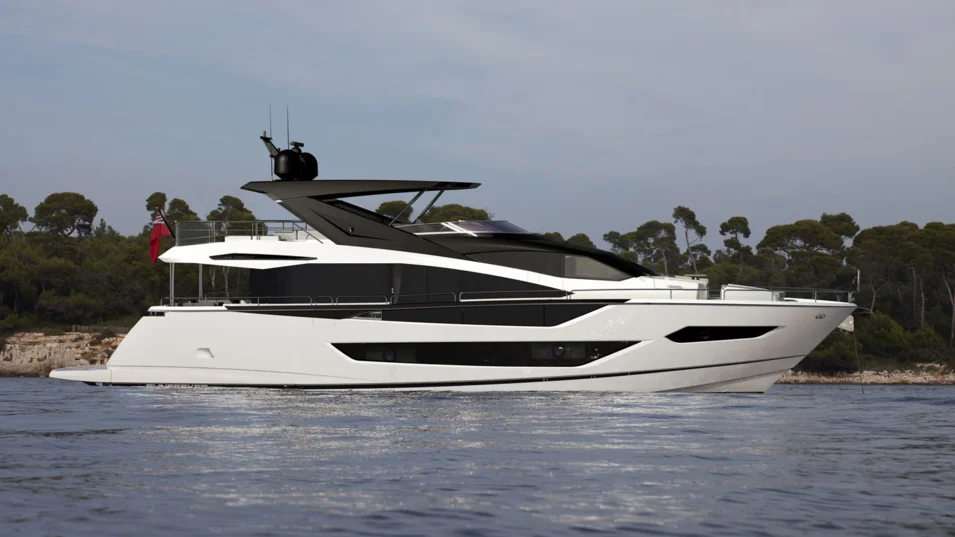
The increased exterior spaces housed comfortable and spacious areas for having dinner and sunbathing. Thanks to the built-in lighting one can create a totally different atmosphere in the same areas after dark. It’ll just suffice to mention the ample foredeck with a large sunpad in the centre, where there can also be a 140-inch cinema screen, a laser projector and an audio system with surround sound.
The interiors of Project 8X are not inferior to the exterior spaces. The main deck saloon features the style of a luxury penthouse, and the guest cabins offer exquisite design and décor. The yard says that the layering of structural elements and the mix of furnishings and fabrics, as well as the mix of furniture and fabrics create a special style, oozing modern simplicity and sophisticated luxury.

The impressively large saloon is 8.8 m long and 5.6 m wide. The furniture in the saloon is mainly freestanding. The floor-to-ceiling windows and the sliding doors on the portside fill the space with natural light. The galley is located forward.
The full-beam master stateroom features 2.5-metre windows. The furniture is designed with the sleek, elegant lines of the yacht in mind. The VIP cabin with a private access and two twin cabins forward that can be converted into double ones provide comfortable accommodation for up to eight guests.

The yard says that the 88 Yacht has a lot of surprise features, and each of them was thoroughly thought out. The 88 Yacht in the Sunseeker model range was followed by other “crossovers” like the 90 Ocean or the 100 Yacht, although they avoid using the term at the yard.
And what if you combine a trawler and a cruising yacht?
Italian Cranchi shipyard interpreted the idea of crossovers in its own way and unveiled the T36 Crossover. In collaboration with designer Christian Grande they offered an original idea of a cross between a trawler and a planing cruising yacht, combining the practicality of the former and the thrill of handling the latter.
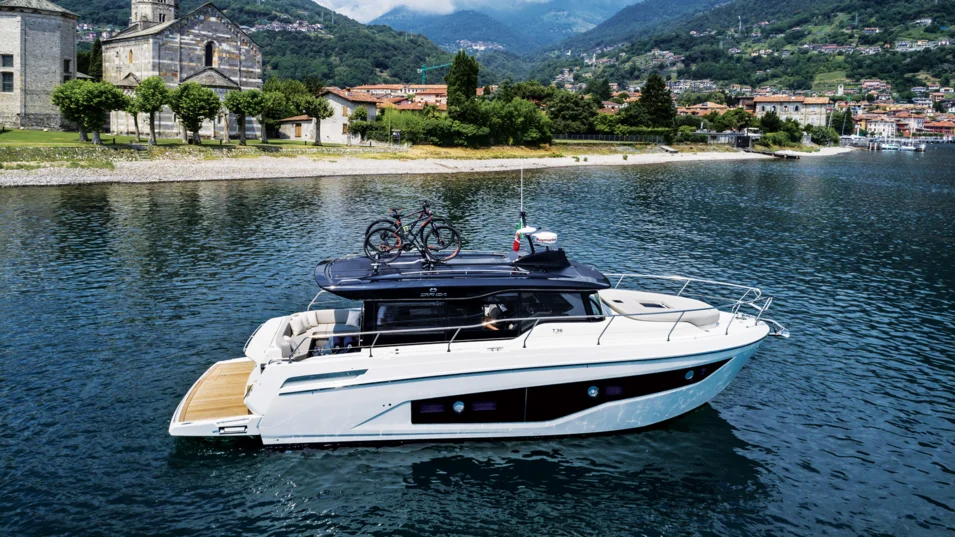
The idea was appreciated and the boat became the Powerboat of the Year 2019 in the 35–45 feet category. The 11.85-metre T36 Crossover is the smallest of the crossovers presented in this article, but the yard’s intention was to preserve the features of far larger boats.
The charismatic exterior design characterized mainly by horizontal lines, adds brutality to the boat. Besides, the hardtop can be used to transport bicycles and water toys.
Large interior volume and a galley in the saloon freed up space for a third cabin below deck, which is quite rare for a boat of this size. The enclosed cockpit makes it possible to travel in any weather, while the panoramic glazing provides excellent visibility. There are sunpads on the foredeck and a lounge and an electric grille aft.

The light and robust Kevlar hull is fuel efficient. The top speed of 34 knots gives an opportunity to have fun on the water. Another advantage of this crossover is that it can be used not only in warm waters. “I designed the Cranchi T36 Crossover to stimulate the fantasies and wishes of owners in the Mediterranean and, at the same time, to meet the needs of owners who sail in cold climates such as those in northern Europe,” explained Christian Grande.
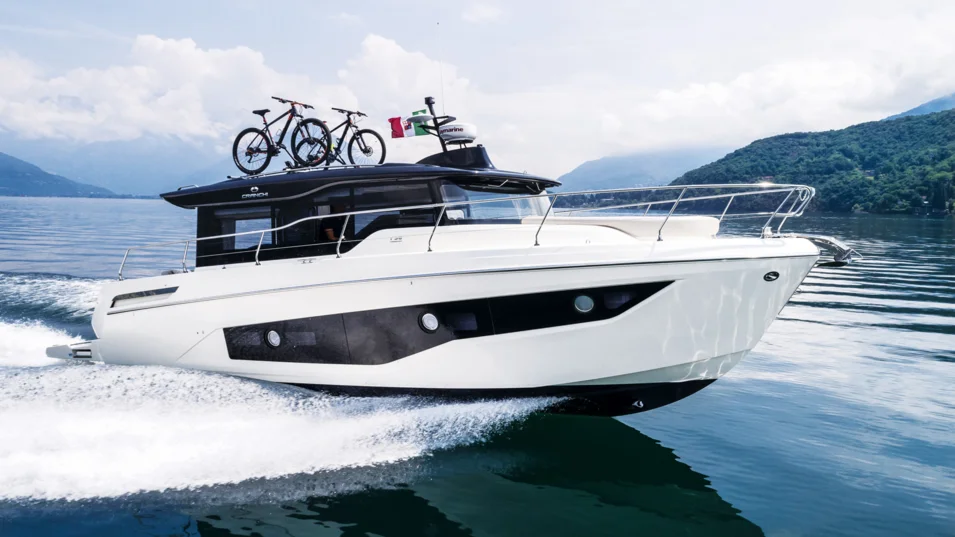
Despite a number of benefits and original features, the Cranchi T36 Crossover did not catch on and after a few years the shipyard made a decision to take it out of production. It is no longer available in the shipyard’s current model range and can be found on the secondary market only. It looks like the very idea of crossover yachts does not seem appealing to Cranchi anymore, so they focused on more conventional yachts.
Incredible flybridge
It did not take British Princess Yachts long to give its response to the crossover craze: early in 2019 they unveiled the X95 model from the X class as a full-fledged project, after fueling the public interest with drops of information and renderings of the new concept. And of course, it couldn’t do without a curtesy towards premium car brands and their crossover models either.
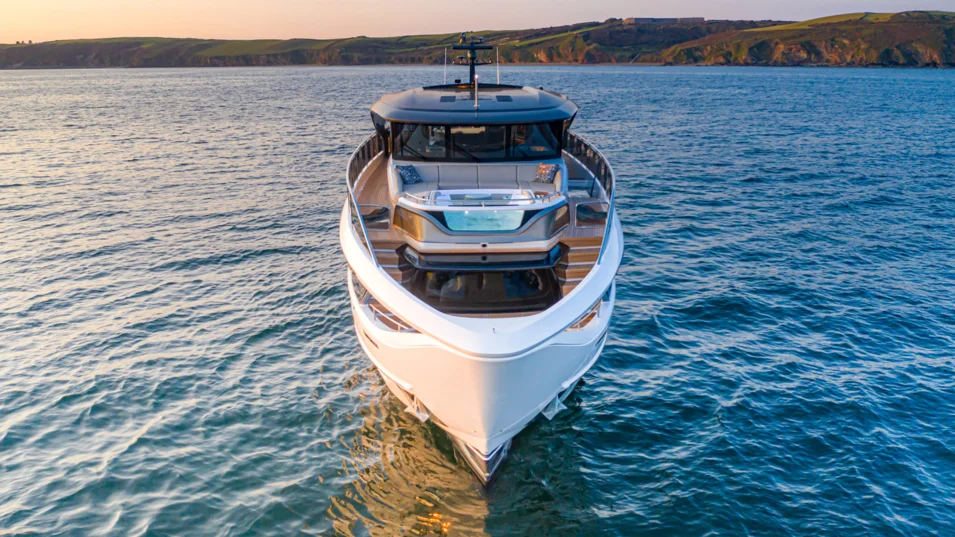
To do the British justice, they interpreted the term “crossover” in their own way and offered the so called “super flybridge” idea. And not without a reason: the X95 super flyabridge is 22 meters, which, according to the yard, is two times larger than average. Deveoped in collaboration with naval architect Bernard Olesinski and Italian designers from Pininfarina this 29-metre yacht declared the concept of open spaces that can easily be adjusted to the owners’ needs. In figures it looks like this: this luxury “sea crossover” boasts 10% more exterior and 40% more interior spaces compared to conventional yachts of a similar size.

The main deck houses an open saloon, flooded with natural light that comes in through large windows. Soft furniture, coffee tables and a home cinema make this area versatile. There can be a galley with a dining room, a cinema or a master room with a panoramic view forward, if the owner does not wish to live on the lower deck, housing all the guest cabins.
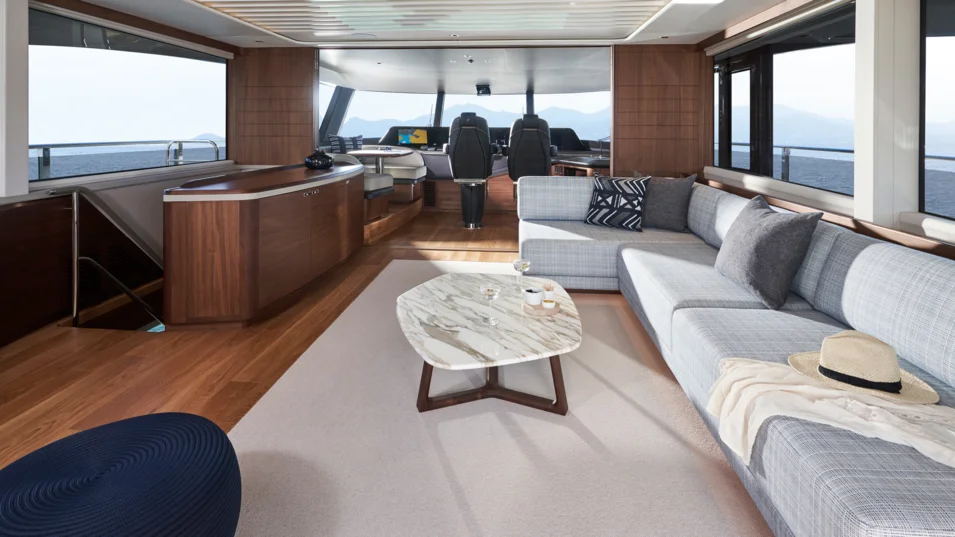
The only helm station is located on the flybridge and united with an enclosed Sky Lounge. This space can be separated from the open part of the flybridge with sliding glass doors, so that the captain and the guests will not bother each other. The bow section can be fitted with a pool or a sunpad.
The crossover’s sea-keeping characteristics and the range are up to the mark too: according to the yard, the X95 can reach a top speed of 24–26 knots (50% load) and go on long voyages.
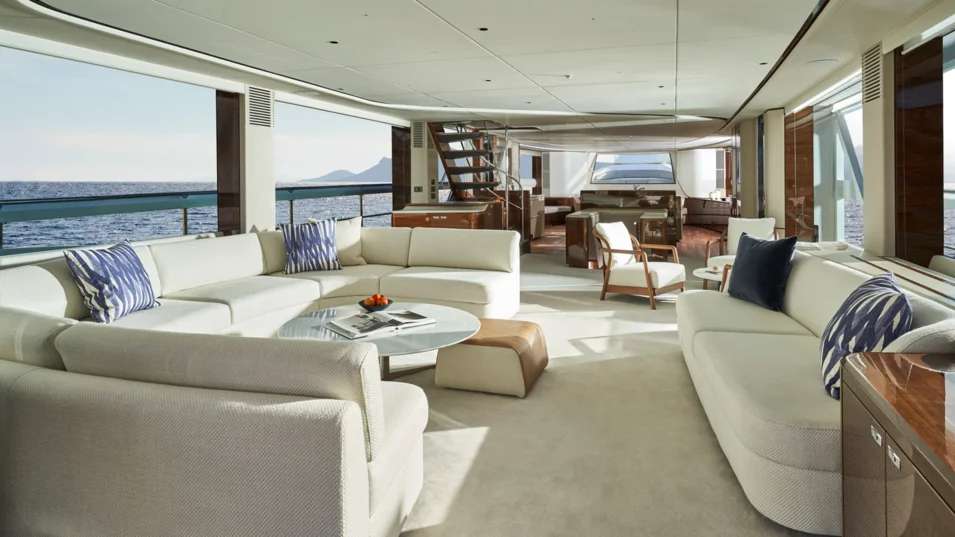
“X95 takes spatial architecture on a yacht to a new level. With a large cockpit, rear flybridge, forward flybridge and foredeck areas, owners and guests will have four distinct outdoor environments to enjoy on board. The central, covered part of the 22-metre flybridge also houses a climate-controlled lounge area in addition to the helmsman’s station, which can be fully opened towards the stern, removing any separation between the inside and outside», said Andy Lawrence, Princess’ head of design.
After the Х95 the Princess Yachts X Class was also joined by the X80, while the facelift of the original X95 got a name of X95 Vista.

Epilogue
In contrast to their land siblings, sea crossovers are far more diverse. Partly this is due to the broad interpretation of the term “crossover” mentioned above, and partly to the fact that not much time has passed for the crossover yacht type to be formed, and it is unlikely to be formed in the nearest future either, as the shipbuilders keep trying to one-up each other. Nevertheless, there are some common family traits. Firstly, it is a kind of symbiosis that enables the shipyards to add some unprecedented features to the established yacht types. A combination of an explorer and a flybridge yacht, a super flybrige vessel or a combination of a trawler and a cruiser are all here. Secondly, it is about better seaworthiness and autonomy that often extend cruising capabilities.
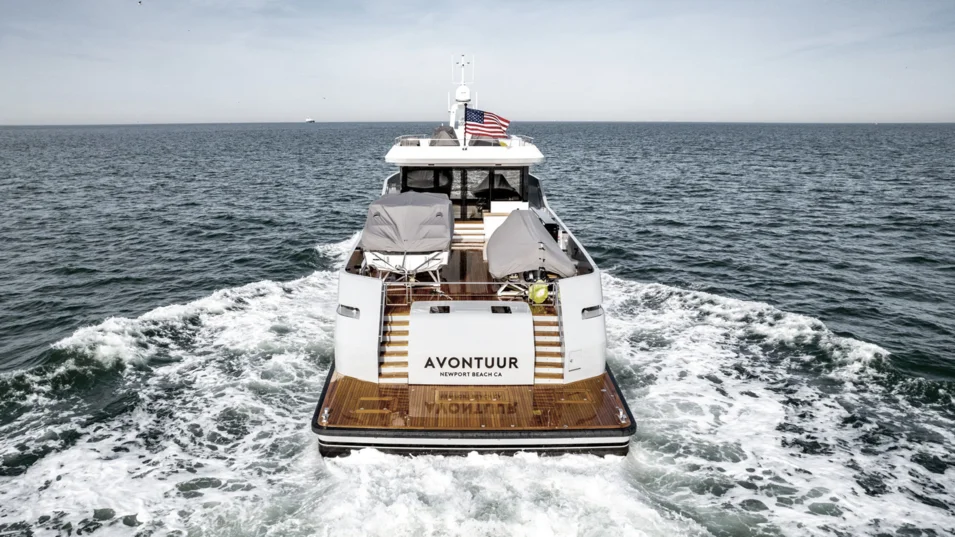
And thirdly, it’s about openness and a new approach to spaces and entertainment on board, allowing the owner to stay closer to the sea, to merge with the environment and to feel what it is like to own a comfortable and stylish crossover and to acquire a house on the water. Judging by the response from the market and the fact that shipyards all over the world present their new crossovers every year, this idea has not only caught on, but is becoming more and more in demand.
You have successfully subscribed to our newsletter
